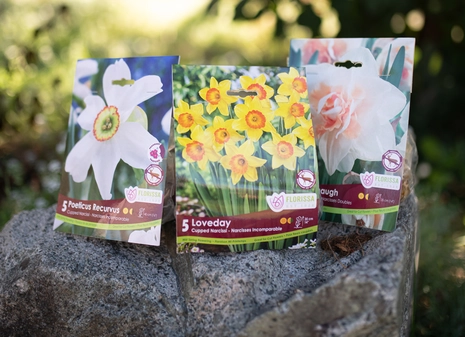Growing Begonias
Shade-loving, big-blossomed tuberous begonias have a reputation for being difficult to grow. While it’s true that begonias can be particular about how they’re treated, it does not take much to keep them happy. Growing begonias becomes easy when you know what they like, and they are worth it. For a shady spot, begonias offer something irresistible, big colour from vibrant flowers that bloom non-stop, mid-summer until frost.
Basics
Begonia tubers are available at GardenWorks in early February. Potted begonias arrive in late spring and early summer when we also carry a selection of begonia baskets. Remember, don’t plant begonias out in the garden until all danger of frost has passed. Begonias generally take from 12 to 15 weeks to bloom and will then will keep blooming until the season ends. For earlier blooming, plant your tubers indoors in pots about six weeks before the last frost date in your area.
Begonias need warm, well-drained soil and a spot that is shaded and out of any drafts/wind. They will struggle in full sunlight. Where conditions are not ideal, adapt growing conditions slightly if you can. Containers make it easier to control soil conditions and can be easily moved to minimize exposure to sun, heat and wind.
Starting Indoors for Earlier Blooms
Select begonia tubers that are firm to the touch. When possible, plant them indoors about six weeks before local planting dates, when the threat frosts is past. Choose clean containers, at least 5-7cm (2-3”) deep, with a drainage hole. Use a commercial potting soil mixed with both peat moss and sand. That way the soil will stay moist but not soggy. Place tubers in the soil mix with their convex (rounded out) side pressed gently onto the surface of the soil. Cover with about 1.5cm (1/2”) of soil and water well. A warm humid setting is optimal for promoting growth. Keep the soil moist, but not wet, and never let it dry out completely. When the shoots reach 15-20cm (6-8”) tall, all threat of frost should be past and your begonia can be transplant the out into the garden or a container.
Plant Outdoors After Frosts Have Passed
Plant tuberous begonias in a rich, well-drained, moisture retentive soil. Space plants one per square foot. Remember begonias do not like hot sun, so keep them away from direct sunlight and midday heat. In cooler climates, direct morning and late afternoon sun are okay. Wind can dry out the plants, and hanging baskets are especially susceptible to being dried out in a windy location.
Keep the soil moist, but don’t over water and try to avoid water sitting on the leaves (water the soil not the leaves). Begonias are not heavy feeders but a light application of fertilizer or compost and/or well-rotted manure is helpful for optimal performance.
For sturdier plants, pinch off extra or “leggy stems” when the plants are developing. Keep the strongest three stems and nip off any others. For fewer but bigger flowers, pinch off early developing flowers, until the plant reaches 25cm (10”) tall. Keep in mind that most upright-flowering plants will need staking.
In fall when night frosts hit, begonia season is over. Either bid begonias adieu as annuals or prior to a killing frost, lift the tubers and store them for the winter. To store them, let the tubers dry for several days, then layer them in peat in a cool dry place (7-10°C). Next spring, replant the plump, healthy tubers for another season of bloom.

